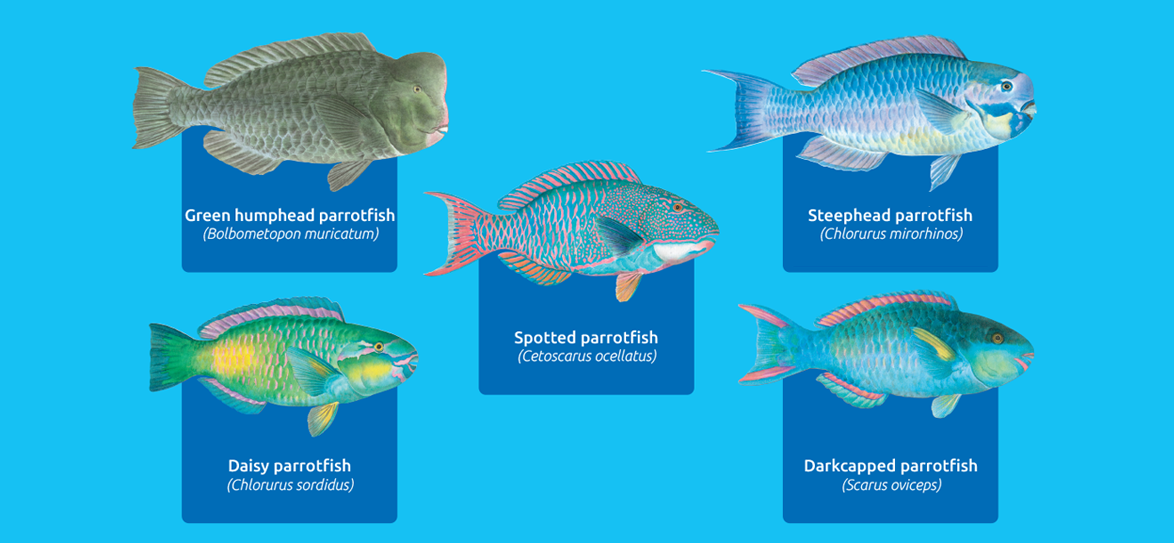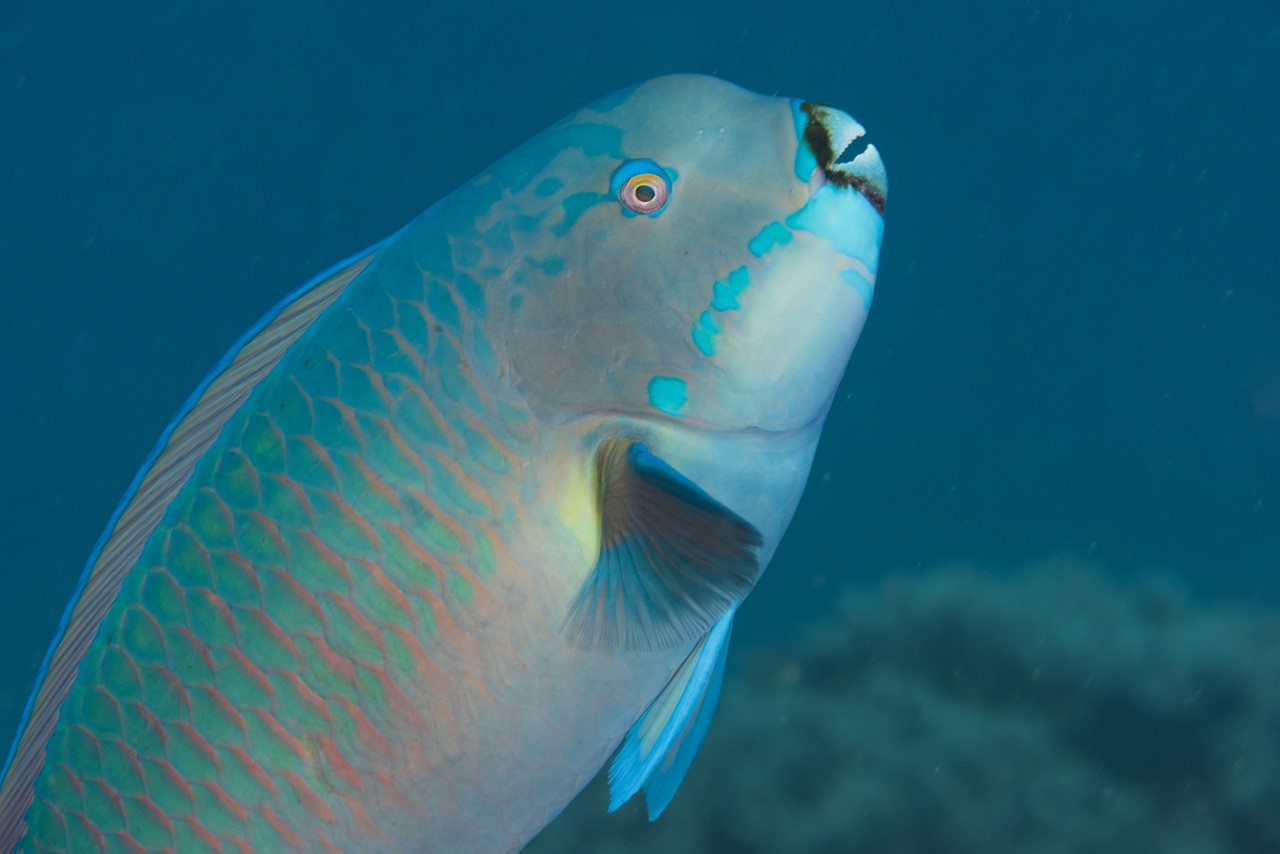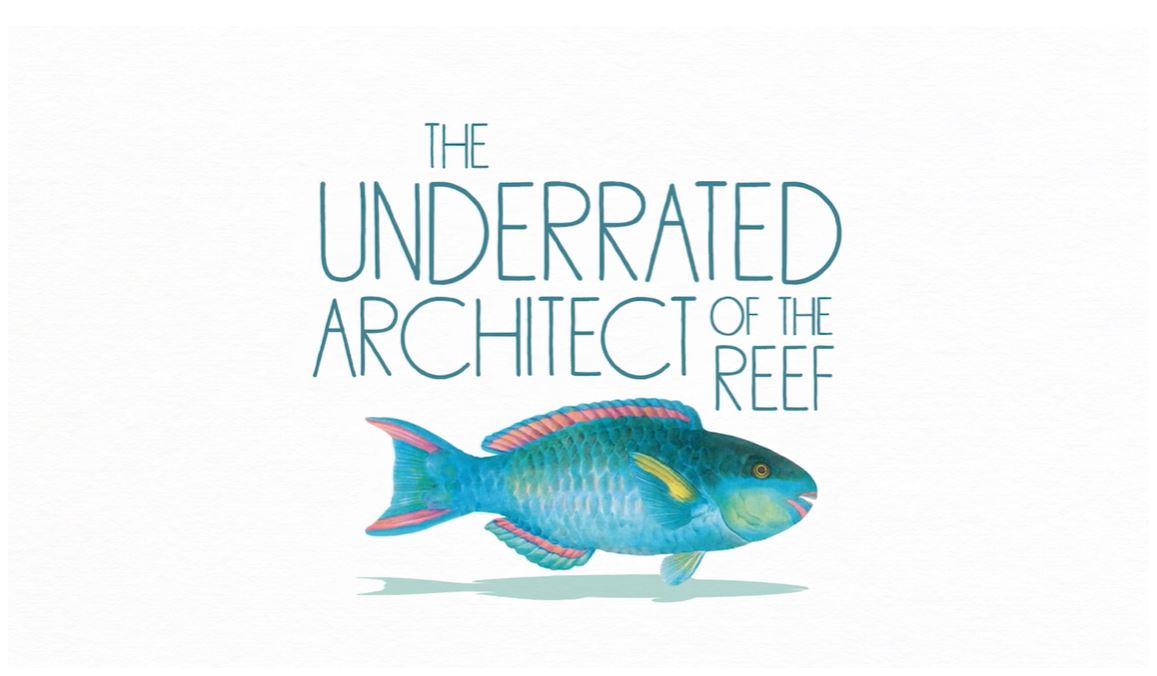Image: © Matthieu Juncker
To gain access to full information on parrotfish, download the information sheet produced by the LMMA Network and SPC.
If you have noticed a decline in your catches or are concerned about parrotfish populations, here are some priority actions the community can consider in addition to national regulations:
Fish smart rules
Temporary bans
A ban on fishing during the times of forming spawning aggregations, which may require a number of short closures as some species spawn several times each year;


Tabu areas
A ban on fishing at known spawning areas or sites.
Gear restrictions
A ban on fishing for parrotfish using spears at night; some communities have already taken this action because this fishing method has been responsible for removing all large parrotfish from local fishing areas;
A ban on the use of small-mesh gill nets; this action may allow smaller fish to escape and grow to a size when they can reproduce.

Good to know: fish reserves are generally not suitable for protecting parrotfish
Fish reserves (areas where no fishing is allowed), particularly if small, are generally not suitable for protecting parrotfish. This is because they move over wide areas to feed and make long migrations to spawning aggregation sites.
Fishing methods
Methods used to catch parrotfish include:
-
Gillnets: this common fishing method is often used in areas containing large groups of breeding fish;
-
Spearfishing: often with underwater torches during the night when the fish are sleeping under coral.
Many parrotfish are caught as they gather in large groups to breed (in spawning aggregations). Fishing in this way is destructive as these breeding fish are responsible for producing small fish, many of which will grow and be available to be caught in future years.
Management measures in the region
Minimum size limits have been applied to parrotfish in some Pacific Islands, which may not be beneficial in species that change sex from female to male as they grow. If only large individuals can be legally caught, catches will be made up of almost all males, leaving an excess of females in the population.
Catch limits (quotas or bag limits) have also been applied to parrotfish but generally such measures are not suitable for community fisheries. Some countries have placed minimum mesh sizes on gill nets and banned the use of underwater breathing apparatus when spearfishing.
Some species

The family Scaridae includes over 90 species of fish known as parrotfish. Parrotfish have evolved bright colours and teeth fused into parrot-like beaks. Most species reach 30 to 50 cm in length. The largest species, the green humphead parrotfish, Bolbometopon muricatum, may grow to 1.3 m long, and weigh up to 46 kg. Parrotfish are found in relatively shallow tropical waters throughout the world and the largest number of species is found in the Indian and Pacific oceans.
Parrotfish are found on rocky coasts and in seagrass beds as well as on coral reefs. At night parrotfish sleep in crevices or holes after wrapping themselves in a transparent covering or cocoon of mucus. The mucus may repel parasites or hide the scent of the fish from night-time predators. The key habitats in the life-cycle of parrotfish are coral reefs and, in many species, the areas where they gather to breed (the spawning aggregation sites), often on the outer reef slope or in channels.
With their fused teeth, parrotfish scrape coral to feed on plant growth and some may feed on the very small plants (zooxanthellae) living within the coral. Some of the coral surface is eaten and this helps with the digestion of the plant material. They graze large quantities of coral to gain small amounts of food and continually release clouds of fine coral particles. As each adult parrotfish can produce about 90 kg of coral particles each year, their contribution to the sand of lagoons and tropical beaches is important. Their feeding activity also prevents coral becoming smothered by plants. The predators of parrotfish include moray eels, snappers and a wide range of larger reef fish.
Almost all species of parrotfish start life as females and later in life change to the vivid green or blue coloured males. Some species have relatively fast growth rates, are able to reproduce within 2 to 3 years, and have an average lifespan of 5 to 6 years. However, larger species appear to grow more slowly and reach ages of more than 15 years.
Some parrotfish species move to particular areas to reproduce in large spawning aggregations. In these aggregations, each female produces thousands of eggs which are fertilised by sperm released by the males.
Within about 25 hours, the fertilised eggs hatch into small forms (the drifting larval stage) about 1 mm long. These drift in the sea for an unknown length of time before settling on coral reefs.
Related resources

To gain access to full information on parrotfish, download the information sheet

